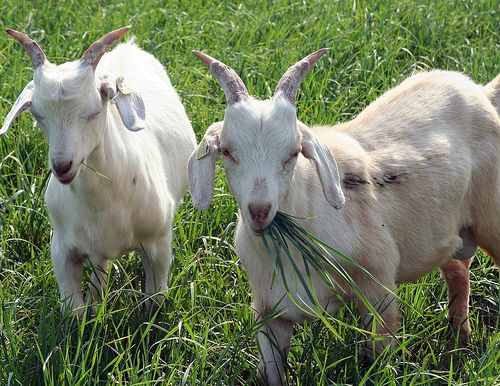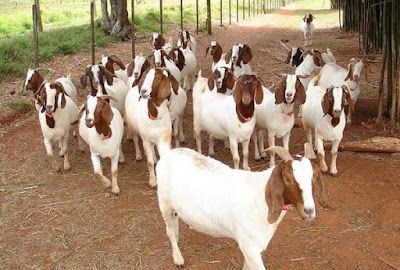Duck Feed Efficiency: Maximizing Productivity and Sustainability in Duck Farming
Duck Feed Efficiency farming has become an essential part of agriculture due to its profitability and the demand for duck products such as meat, eggs, and feathers. A critical aspect of successful duck farming is ensuring that the ducks are fed efficiently. Duck feed efficiency is a measure of how well ducks convert feed into body mass or other desirable outputs such as eggs. High feed efficiency means that ducks are getting the maximum nutritional benefit from their feed, leading to better growth rates, higher egg production, and ultimately, increased profitability for farmers.
Duck Feed Efficiency
Duck feed efficiency refers to the ability of ducks to convert the feed they consume into body mass or egg production. It is expressed as a ratio of weight gained or eggs produced to the amount of feed consumed. High feed efficiency is essential for ensuring the economic sustainability of duck farming, as it directly impacts the cost of production. The better the ducks are at converting feed into growth or production, the lower the feeding costs and the higher the profit margins for farmers.
Several key factors influence feed efficiency in ducks. First, the type and quality of feed are paramount. A well-balanced diet with appropriate levels of protein, fat, vitamins, and minerals is necessary for optimal growth and egg production. Feeds that are specially formulated for ducks can significantly improve feed conversion rates compared to generic poultry feeds.
Second, the age and breed of ducks play an important role. Younger ducks or specific breeds known for their growth rates or egg-laying abilities tend to have higher feed efficiency. For instance, certain meat duck breeds, like Pekin ducks, may be more efficient at converting feed into body mass, while specialized egg-laying breeds may be better at feed-to-egg conversion.
Finally, management practices such as proper housing, temperature control, and ensuring access to clean water also contribute to feed efficiency. Ducks that are kept in environments where stress is minimized and conditions are optimized for their growth and production will use feed more efficiently. By focusing on these factors, farmers can maximize feed efficiency, leading to increased productivity and profitability in duck farming operations.

Benefits of High Duck Feed Efficiency
- Cost Reduction: High duck feed efficiency offers numerous advantages that significantly impact the profitability and sustainability of duck farming. One of the primary benefits is cost reduction. Feed accounts for one of the largest operational expenses in duck farming. By improving feed efficiency, farmers require less feed to achieve optimal growth or egg production, leading to lower production costs. As a result, farmers can enjoy higher profit margins due to reduced feed expenses.
- Improved Growth Rates: Another key benefit is improved growth rates. Ducks that convert feed efficiently into body mass grow faster and reach market weight more quickly. This allows farmers to shorten the time to market, enabling faster turnover and increased revenue. Quicker growth cycles mean that more ducks can be raised and sold in a given period, maximizing the farm’s output.
- Enhanced Egg Production: For those focusing on egg production, high feed efficiency translates into more eggs produced with the same amount of feed. This leads to higher egg yields, improving the profitability of duck egg farming. The ability to produce more eggs without increasing feed consumption allows farmers to remain competitive in the market.
- Better Health and Welfare: Better health and welfare are also associated with high feed efficiency. Ducks that receive the right balance of nutrients grow healthier and are less prone to diseases. Proper nutrition strengthens their immune systems, reducing mortality rates and the need for veterinary interventions. Healthy ducks are not only more productive but also cost-effective to maintain.
- Environmental Sustainability: environmental sustainability is a significant benefit. Higher feed efficiency means that less feed is wasted, which reduces the environmental footprint of duck farming. Additionally, fewer natural resources are consumed in producing the feed, contributing to more sustainable farming practices. This aligns with modern efforts to reduce the environmental impact of agriculture while ensuring efficient production.
Goals of Improving Duck Feed Efficiency
- Maximizing Productivity:The goals of improving duck feed efficiency revolve around enhancing the overall productivity, sustainability, and profitability of duck farming operations. One of the foremost goals is maximizing productivity. By improving feed efficiency, farmers can achieve faster growth rates, allowing ducks to reach market weight sooner, which in turn leads to quicker turnover and increased revenue. Additionally, higher feed efficiency in egg-laying ducks leads to enhanced egg production, improving the farm’s output without increasing feed costs. This also ensures healthier ducks, which are more resilient and productive over time.
- Reducing Costs: Another key goal is reducing costs. Since feed is one of the most significant expenses in duck farming, improving feed efficiency directly reduces the amount of feed required for optimal growth and production. This reduction in feed consumption translates to lower operational costs, allowing farmers to maintain higher profit margins. Cost reduction also contributes to more sustainable farming practices, making the operation financially viable in the long term.
- Enhancing Product Quality: Enhancing product quality is another critical objective. Ducks that are fed efficiently receive the appropriate balance of nutrients, which directly impacts the quality of the meat and eggs they produce. Well-nourished ducks yield higher-quality products that are more appealing to consumers. Superior product quality enhances the marketability of duck products, leading to increased demand and higher prices, thus boosting the farm’s profitability.
- Promoting Animal Welfare: Promoting animal welfare is also a key goal. Efficient feeding practices ensure that ducks are provided with the nutrients they need to thrive. Healthier ducks are less prone to diseases and have lower mortality rates, which contributes to better overall productivity. Improved welfare also aligns with ethical farming practices, which are increasingly valued by consumers and regulators.
- Sustainable Farming Practices: sustainable farming practices are promoted through improved feed efficiency. By reducing feed waste and optimizing resource use, farmers minimize the environmental impact of their operations. This contributes to a more sustainable and responsible approach to duck farming, ensuring long-term success and ecological balance.

Ideas for Improving Duck Feed Efficiency
- Optimal Feed Formulation: improving duck feed efficiency is crucial for optimizing production and reducing costs in duck farming. Several strategies can be implemented to achieve better feed efficiency, beginning with optimal feed formulation. Developing feed formulations tailored to meet the specific nutritional needs of ducks at various stages of growth is essential. This means providing the right balance of proteins, fats, carbohydrates, vitamins, and minerals, ensuring that ducks are receiving adequate nutrition without wasting feed.
- High-Quality Feed Ingredients: The use of high-quality feed ingredients is another effective way to improve feed efficiency. Fresh, well-preserved feed that is rich in digestible nutrients can help ducks absorb the essential nutrients more effectively. Poor-quality feed with lower digestibility can lead to nutrient wastage and reduced efficiency. Incorporating ingredients that boost nutritional value without compromising quality is key to improving overall efficiency.
- Proper Feeding Techniques: Duck Feed Efficiency,Proper feeding techniques are also vital. Ducks should have access to feed at regular intervals, and feeding should be managed to ensure that all ducks can reach the feed without overcrowding. Avoiding feed spoilage or contamination is equally important. Ensuring the ducks’ feeding environment is clean and organized promotes better feed intake and conversion rates.
- Use of Feed Additives: Duck Feed Efficiency,The use of feed additives such as enzymes, probiotics, and prebiotics can further enhance feed efficiency. These additives improve the digestibility of feed and aid in nutrient absorption, allowing ducks to get more value from each portion of feed.
- Regular Monitoring and Adjustments: Duck Feed Efficiency,Regular monitoring and adjustments to feed intake and growth rates allow farmers to make informed decisions about feed formulation and feeding schedules. Tracking performance helps identify areas where improvements can be made.
- Breeding for Feed Efficiency: Duck Feed Efficiency,Breeding for feed efficiency can lead to long-term improvements. Selecting ducks with a genetic predisposition for higher feed efficiency and breeding them can gradually improve the flock’s overall efficiency over generations.
- Environmental Management: environmental management plays a crucial role in feed efficiency. Ducks housed in optimal conditions with proper temperature, humidity, and ventilation experience less stress, which directly contributes to better feed conversion rates. Stress management is a key factor in achieving the best results in feed efficiency.
Topic Suggestions for Further Research on Duck Feed Efficiency
Further research on duck feed efficiency can provide valuable insights to optimize feeding practices, improve productivity, and reduce costs in duck farming. Below are several important topic suggestions for further exploration:
- Impact of Different Feed Formulations on Duck Feed Efficiency: Investigating how various feed formulations affect feed efficiency in ducks can help determine the ideal composition of proteins, fats, carbohydrates, vitamins, and minerals. This research could lead to the development of specific feeds tailored to different growth stages or production goals (meat or egg production).
- Role of Feed Additives in Improving Duck Feed Efficiency: Researching the effectiveness of feed additives, such as enzymes, probiotics, and prebiotics, can shed light on which additives are most beneficial for enhancing nutrient absorption and improving overall feed efficiency. This could help farmers make informed decisions about incorporating these additives into duck feed.
- Genetic Factors Influencing Duck Feed Efficiency: Studying the genetic traits that impact feed efficiency in ducks can help in developing breeding programs aimed at producing ducks with superior feed conversion abilities. Identifying specific genes linked to efficient feed conversion can guide selective breeding efforts to enhance productivity.
- Nutritional Requirements of Ducks at Different Growth Stages: Researching the specific nutritional needs of ducks during different life stages, such as ducklings, juveniles, and adults, will enable the creation of stage-specific feed formulations. This can optimize feed efficiency by ensuring ducks get the right nutrients at each developmental phase.
- Effect of Environmental Conditions on Duck Feed Efficiency: Understanding how environmental factors like temperature, humidity, and housing conditions affect feed efficiency can help farmers create better management systems. Adjusting these conditions could lead to reduced stress and improved feed utilization.
- Economic Benefits of Improved Duck Feed Efficiency: Analyzing the financial impact of improving feed efficiency will provide farmers with data on how reduced feed costs, faster growth rates, and improved product quality contribute to higher profit margins and long-term sustainability.
- Comparative Analysis of Feed Efficiency in Different Duck Breeds: Conducting studies to compare feed efficiency among different duck breeds can identify the breeds that are most efficient in converting feed into body mass or eggs. This information can inform breeding and farming decisions for maximum productivity.

Advantages of High Duck Feed Efficiency
Duck feed efficiency is a critical factor that determines the success and profitability of duck farming operations. By understanding and optimizing the factors that influence feed efficiency, farmers can achieve significant cost savings, improve the productivity and health of their ducks, and enhance the quality of their products. The benefits of high feed efficiency extend beyond economic gains, contributing to more sustainable and responsible farming practices. As the demand for duck products continues to grow, improving feed efficiency will remain a key focus for farmers seeking to maximize their returns and ensure the long-term sustainability of their operations.






